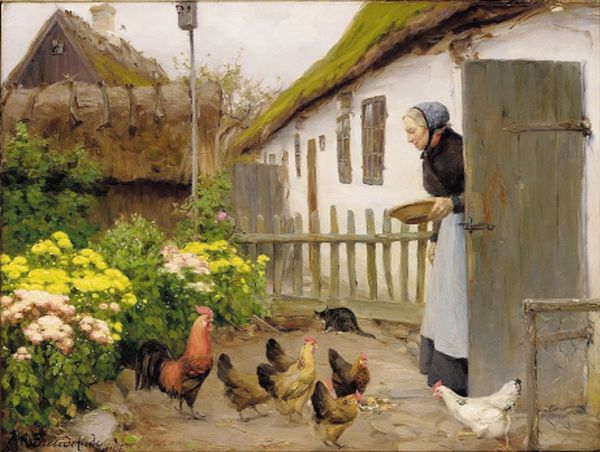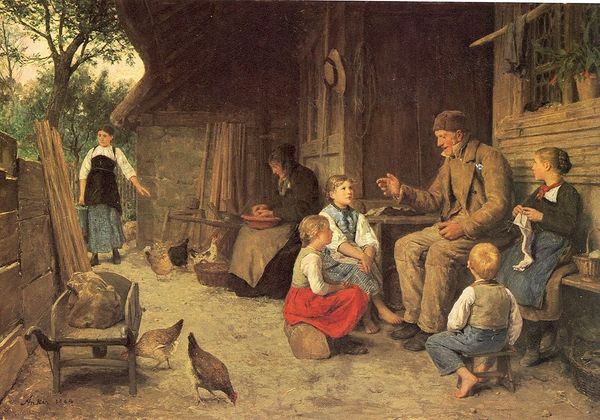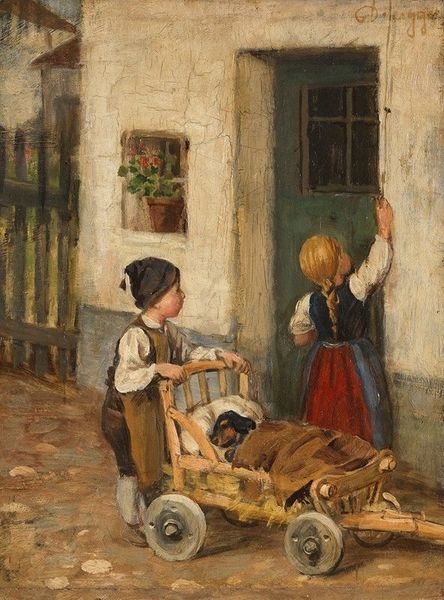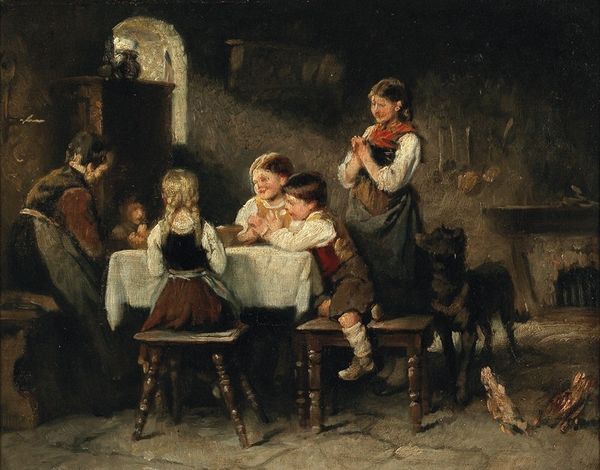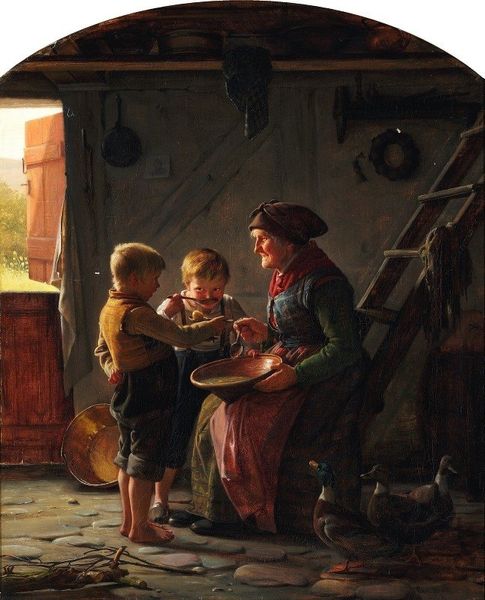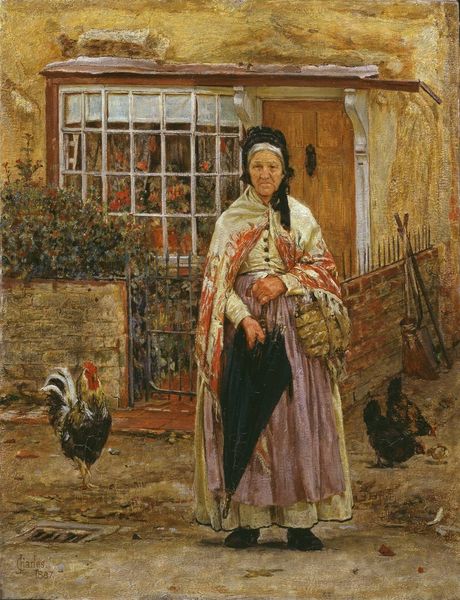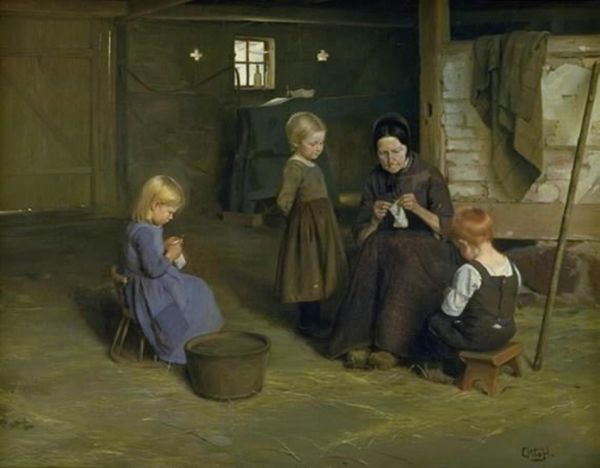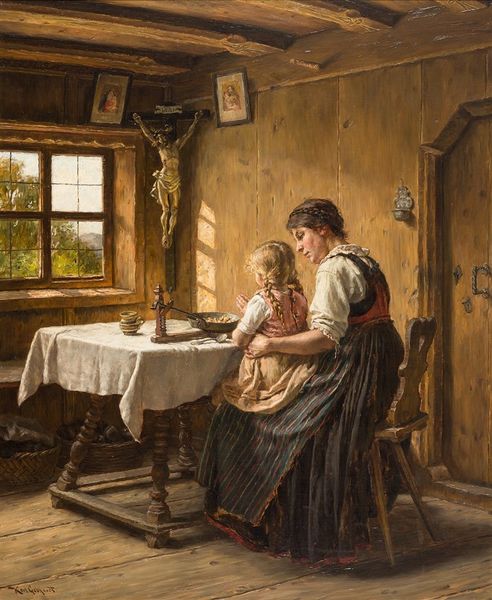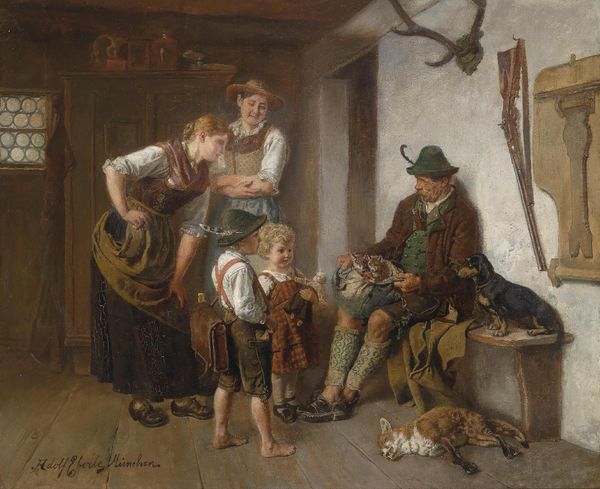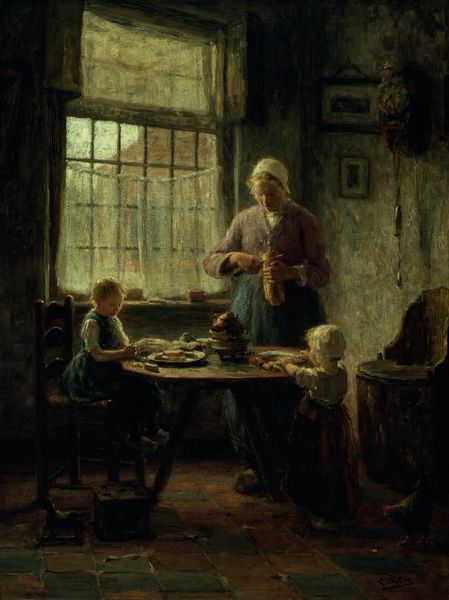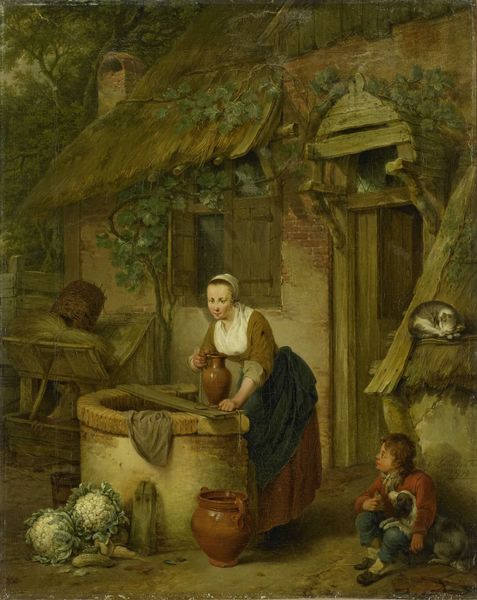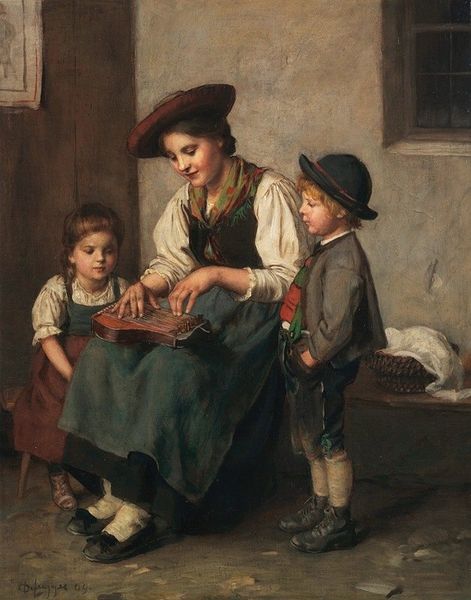
Copyright: Public domain
Curator: Standing before us is Albrecht Anker’s 1865 painting, "Young Girl Feeding the Hens," an idyllic genre scene rendered in what appears to be a skillful blend of watercolor and gouache. Editor: It’s wonderfully evocative. The overall composition gives a sense of warmth. There’s an intimate feeling about it. The color palette really adds to the calm mood. Curator: Anker was celebrated for these intimate glimpses into rural life. Looking at the two figures: the girl, dutifully scattering feed, while the boy lounges. They are presented with such realistic simplicity; how does that strike you? Editor: There is something quietly subversive about the way Anker portrays childhood. It reflects an evolving societal perception of the role of children, moving away from miniature adults. See how they engage freely with their surroundings! Curator: Observe also the use of light. The subdued illumination softens forms, and allows the textures of the wood to speak without being too loudly rustic, which really softens the work overall. Editor: True, and it really feels deliberate doesn't it, reflecting broader trends within the visual arts toward an appreciation for scenes from daily life. The children seem to fit organically within the barn setting, blending with muted tones as the viewer finds joy from an elevated reality. It invites an idealistic engagement with agrarian life. Curator: The painting’s strength comes precisely from its uncomplicated narrative; a fleeting moment captured expertly using fairly restricted means in watercolor, and perhaps some gouache. Its seeming naturalism offers the viewer immediate access. Editor: Indeed. It acts almost as a form of social commentary, capturing the spirit of the changing times while casting a slightly nostalgic glance at rural Switzerland and simple virtues. Anker uses a child and barnyard animals, and transcends. Curator: A quiet success then. Its formal construction marries itself to a progressive ethos. Editor: Anker provides us an image of childhood, carefully crafted and framed in tones of everyday realism, it also reflects ideals about freedom, and what children were becoming at the time.
Comments
No comments
Be the first to comment and join the conversation on the ultimate creative platform.
